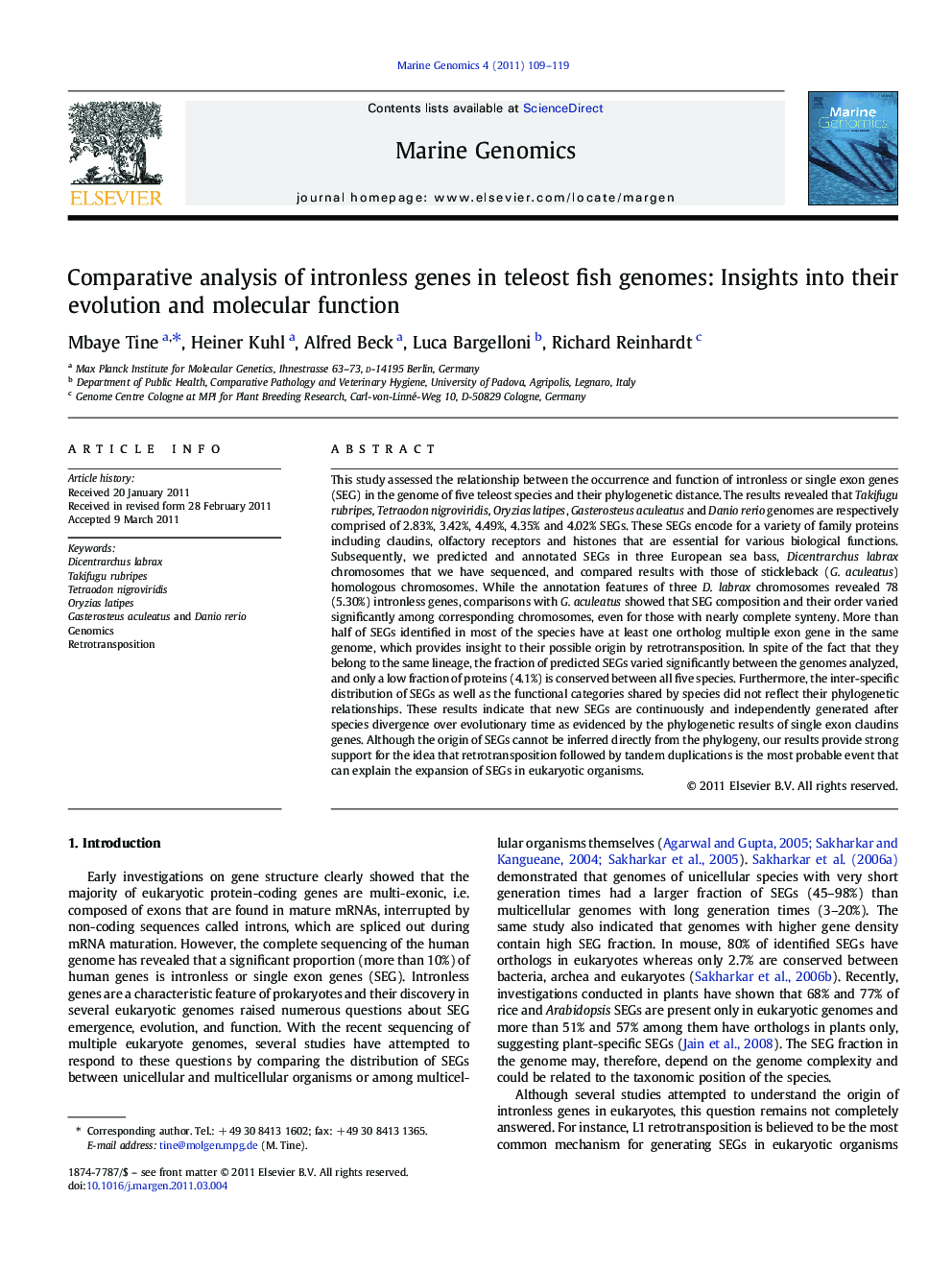| Article ID | Journal | Published Year | Pages | File Type |
|---|---|---|---|---|
| 2058383 | Marine Genomics | 2011 | 11 Pages |
This study assessed the relationship between the occurrence and function of intronless or single exon genes (SEG) in the genome of five teleost species and their phylogenetic distance. The results revealed that Takifugu rubripes, Tetraodon nigroviridis, Oryzias latipes, Gasterosteus aculeatus and Danio rerio genomes are respectively comprised of 2.83%, 3.42%, 4.49%, 4.35% and 4.02% SEGs. These SEGs encode for a variety of family proteins including claudins, olfactory receptors and histones that are essential for various biological functions. Subsequently, we predicted and annotated SEGs in three European sea bass, Dicentrarchus labrax chromosomes that we have sequenced, and compared results with those of stickleback (G. aculeatus) homologous chromosomes. While the annotation features of three D. labrax chromosomes revealed 78 (5.30%) intronless genes, comparisons with G. aculeatus showed that SEG composition and their order varied significantly among corresponding chromosomes, even for those with nearly complete synteny. More than half of SEGs identified in most of the species have at least one ortholog multiple exon gene in the same genome, which provides insight to their possible origin by retrotransposition. In spite of the fact that they belong to the same lineage, the fraction of predicted SEGs varied significantly between the genomes analyzed, and only a low fraction of proteins (4.1%) is conserved between all five species. Furthermore, the inter-specific distribution of SEGs as well as the functional categories shared by species did not reflect their phylogenetic relationships. These results indicate that new SEGs are continuously and independently generated after species divergence over evolutionary time as evidenced by the phylogenetic results of single exon claudins genes. Although the origin of SEGs cannot be inferred directly from the phylogeny, our results provide strong support for the idea that retrotransposition followed by tandem duplications is the most probable event that can explain the expansion of SEGs in eukaryotic organisms.
Research highlights► About 4% of genes in fishes are comprised by intronless genes. ► More than half of SEGs have at least one ortholog MEG in the same genome. ► SEG composition & order varied among sea bass and stickleback syntenic chromosomes. ► Interspecific distribution of SEGs did not reflect their phylogenetic relationships. ► SEGs in fishes have evolved by retrotransposition followed by tandem duplications.
